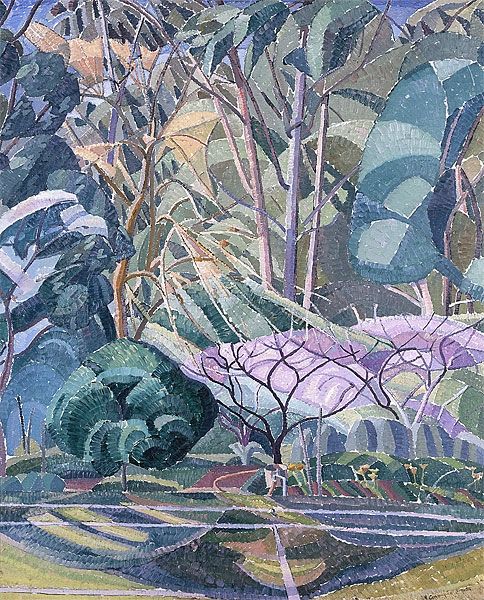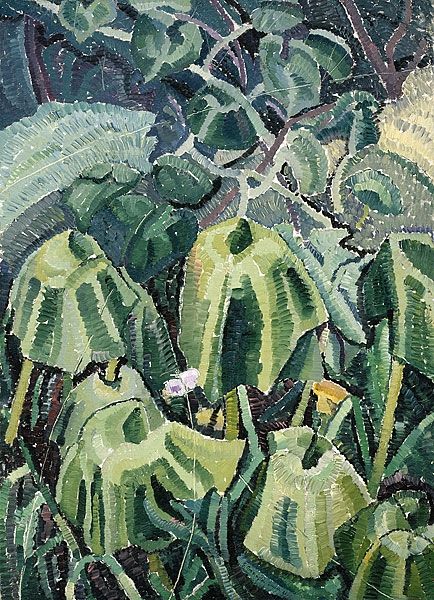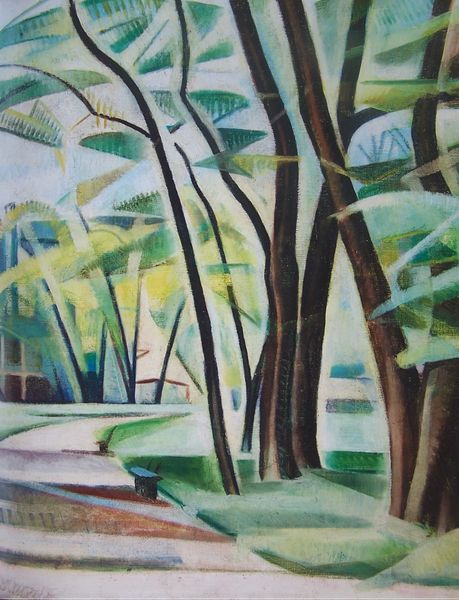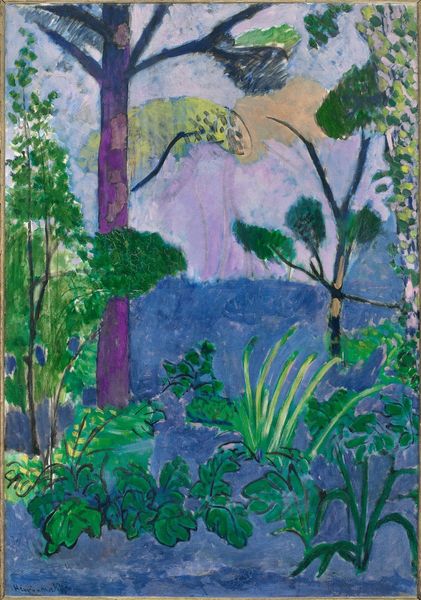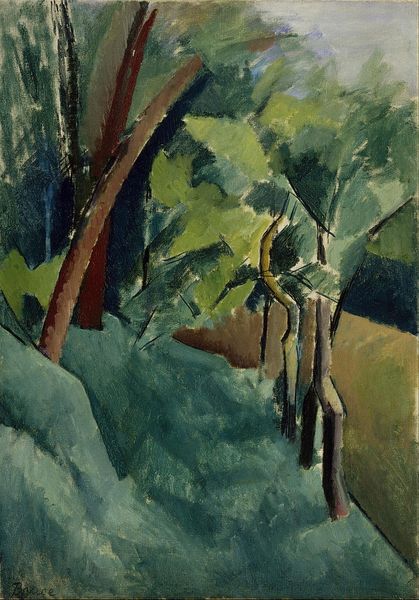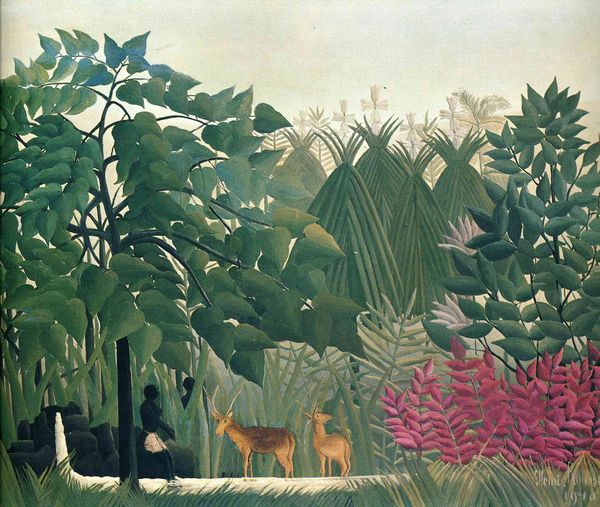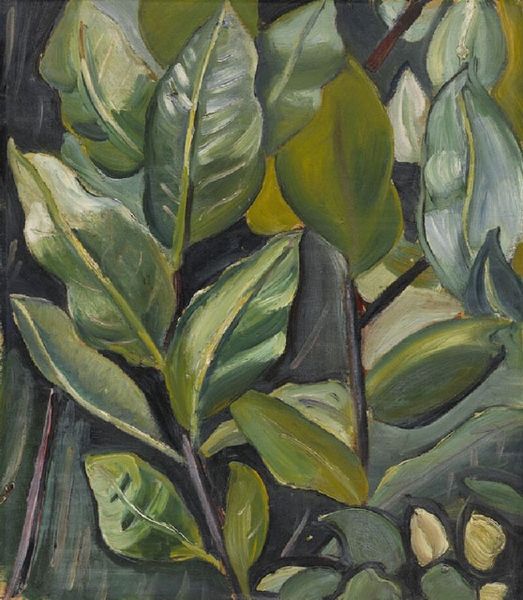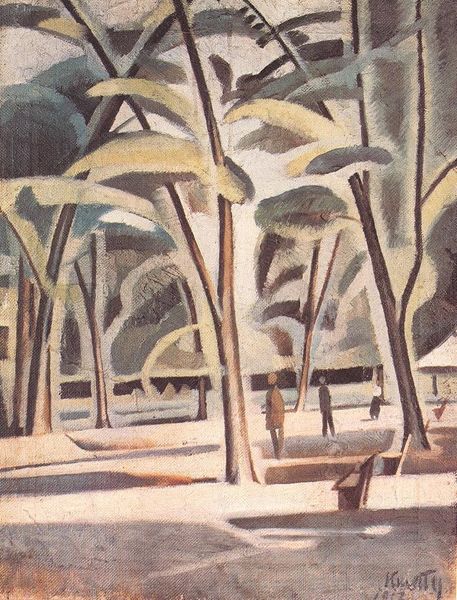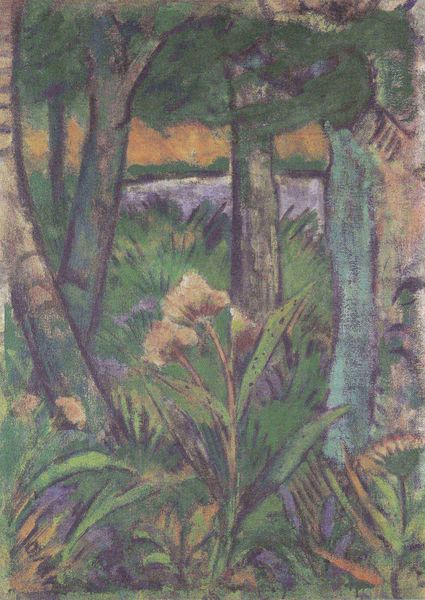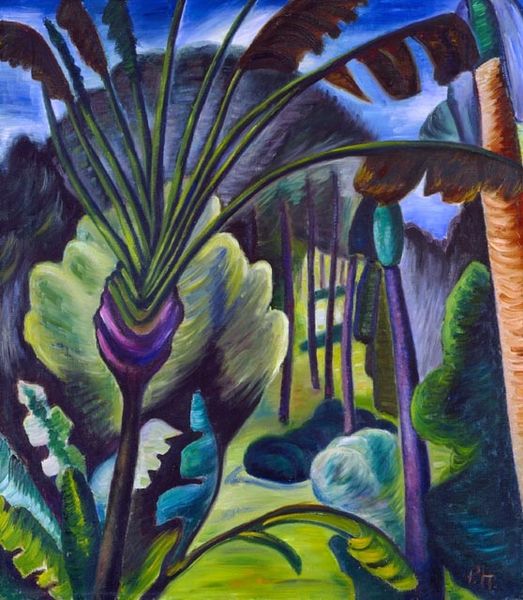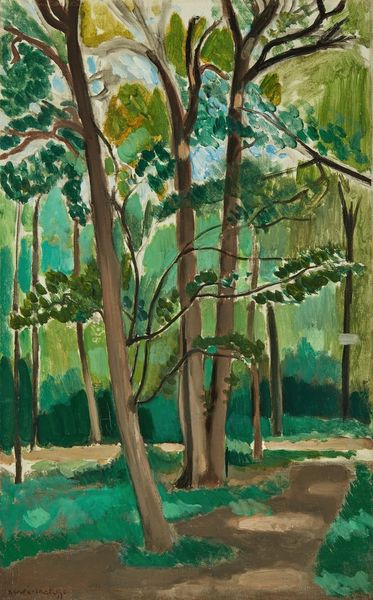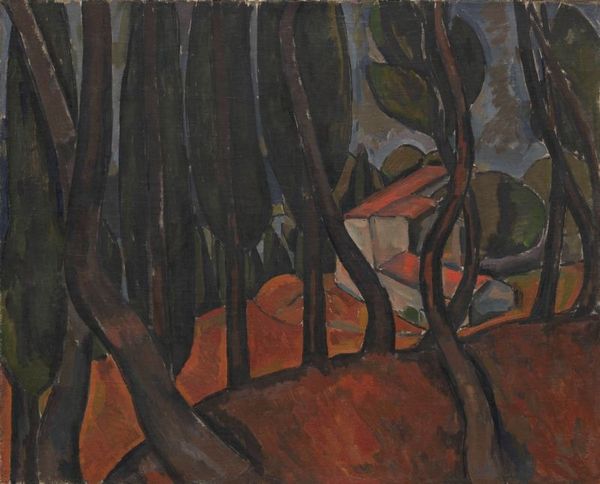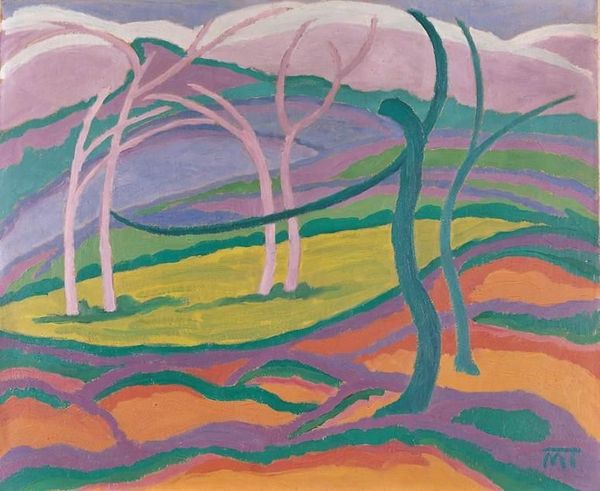
Copyright: Grace Cossington Smith,Fair Use
Editor: Here we have Grace Cossington Smith’s, *The Gully,* painted in 1928. It’s an oil painting, and I find the colours quite muted and calming, though the brushstrokes are very visible. How would you interpret this work? Curator: Let’s consider the interplay of forms. The verticality of the trees competes with the implied recession into depth, creating a tension. Observe how Smith uses colour not to imitate nature directly, but to construct spatial relationships and define form. The distinct patches of colour contribute to a fragmented yet cohesive whole. Editor: So, it’s less about depicting a gully realistically and more about the relationship between the colours and shapes themselves? Curator: Precisely. Consider the rhythmic repetition of brushstrokes. What effect does that regularity produce, and how does that repetition of the individual brush strokes influence your reading? The artist's choice is deliberate. We see this method through out her body of work, to invoke movement in static paintings. Editor: That makes me consider how much the textures contribute, as they create more distinct surfaces. Do you see the visible brushstrokes as aligning the work with Expressionism? Curator: There is certainly a relationship. However, it lacks the emotional angst typically associated with expressionism. Look closer; Smith manipulates our reading. What may be perceived as spontaneous strokes when viewed from afar, take a closer approach, reveals deliberate considered application of colour. The use of these bold colours contribute to depth while creating a structural unity. Editor: I hadn’t really noticed how carefully those strokes were placed, but now I can see how crucial that is to the composition! Curator: By analysing form and colour in relation to one another, we discover not just what it represents, but how its intrinsic visual language invites our eyes into movement across this space. Editor: It’s made me see the painting in a totally different way, moving away from landscape depiction. Thanks!
Comments
No comments
Be the first to comment and join the conversation on the ultimate creative platform.
